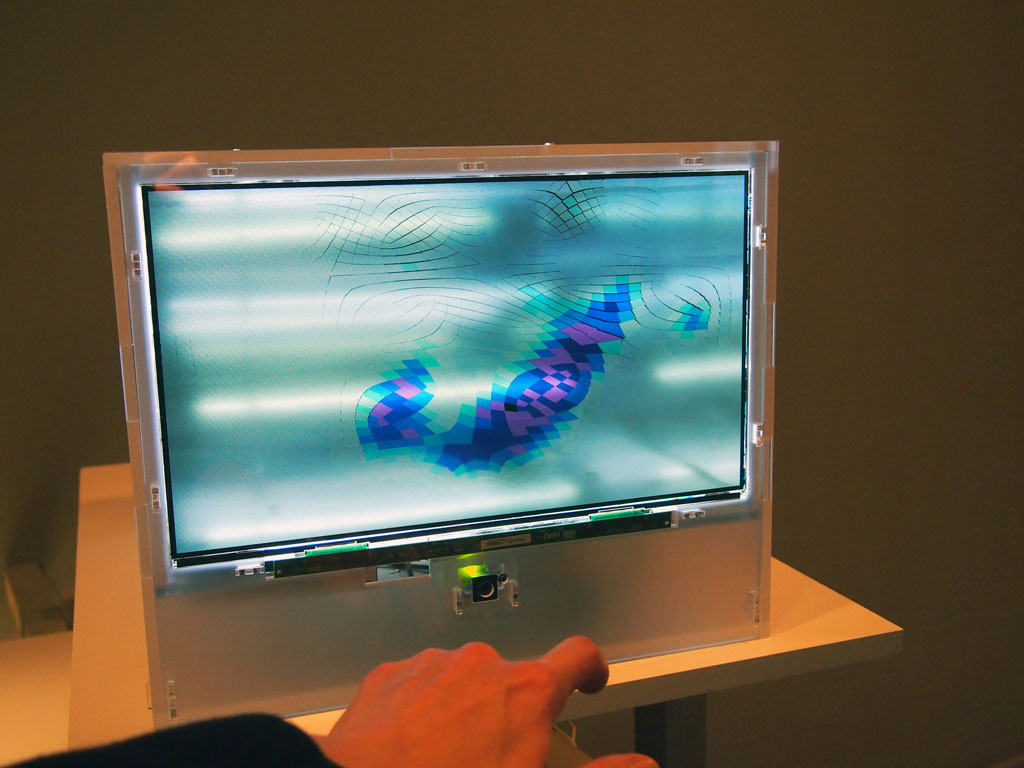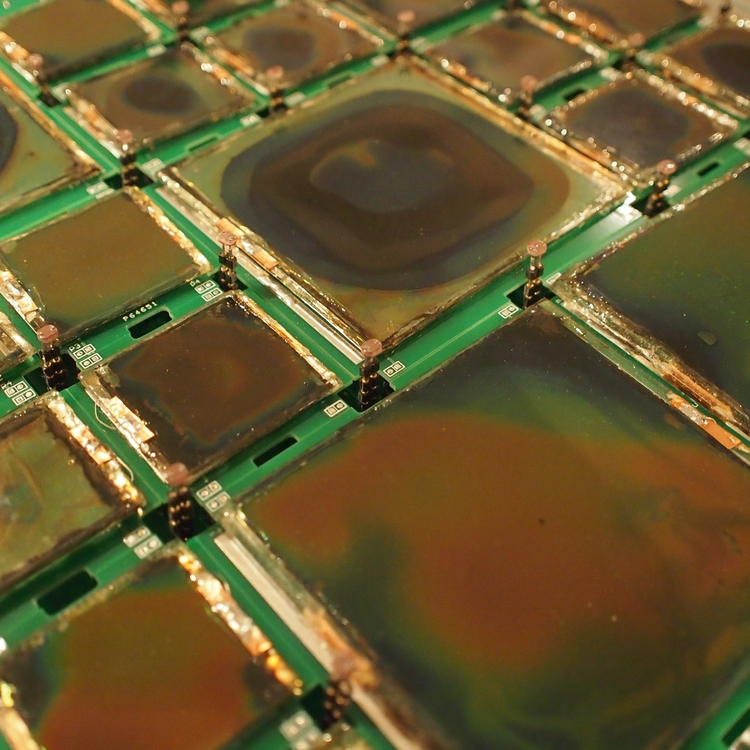
eSkin - Sabin Lab

Principal Investigator: Jenny E. Sabin
Design Research Team: Andrew Lucia, Simin Wang, Giffen Ott
How might architecture respond to issues of ecology and sustainability whereby buildings behave more like organisms in their built environments? We are interested in probing the human body for design models that give rise to new ways of thinking about issues of adaptation, change and performance in architecture. The eSkin project starts with these fundamental questions and applies them towards the design and engineering of responsive materials and sensors. The work presented here is one subset of ongoing trans-disciplinary research spanning across the fields of cell biology, materials science, electrical and systems engineering, and architecture. The goal of eSkin is to explore materiality from nano to macroscales based upon an understanding of the dynamics of human cell behaviors.

eSkin Prototype - ‘Archilab 2013: Naturaliser l’architecture’ Les Turbulences - FRAC Centre, Orleans, France
Since the official public launch in the fall of 2010 of our National Science Foundation (NSF) Emerging Frontiers in Research and Innovation (EFRI) Science in Energy and Environmental Design (SEED) project titled, Energy Minimization via Multi-Scalar Architectures: From Cell Contractility to Sensing Materials to Adaptive Building Skins, we have led a team of architects, graduate architecture students and researchers in the investigation of biologically-informed design through the visualization of complex data sets, digital fabrication and the production of experimental material systems for prototype speculations of adaptive building skins, designated eSkin, at the macro-building scale. Our project contributes to an area within architecture called adaptive architecture while also presenting a unique avant-garde model for sustainable design via the fusion of the architectural design studio with laboratory-based scientific research.
Our emphasis rests heavily upon the study of natural and artificial ecology and design, especially in observing how cells interacting with pre-designed geometric patterns alter these patterns to generate new surface effects. These tools and modes of design thinking, are then applied towards the design and engineering of passively responsive materials, and sensors and imagers. Our role as architects, involves generating tools to visualize and simulate cell attraction forces and cell behavior such as forces distributed via a virtual extracellular matrix environment, over multiple time-states while also incorporating micro-scale material constraints. Beyond visualization, we also direct the architectural intent of the project by constantly speculating on how results at the nano and micro-level will potentially look, feel, and assemble at a building scale. For example, we are designing and fabricating architectural prototypes that integrate actual simulation data from micro-scale material substrates to speculate upon how these complex behaviors and effects may translate to the building scale and initiate human interactivity. Based upon these nonlinear and dynamic responses that human cells generate, we are redesigning and re-engineering interfaces between living and engineered systems with the ultimate goal of implementing some of the key features and functions revealed by cells on a chip for sensing and control at the building scale.
The synergistic, bottom-up approach across diverse disciplines, including cell-matrix biology, materials science & engineering, electrical & systems engineering, and architecture brings about a new paradigm to construct intelligent and sustainable building skins that engage users at an aesthetic level with minimal energy consumption. eSkin cultivates active ecologies from the micro to the macro, where code, context, matter, geometry and perception are integrated into responsive material systems. eSkin is also about breaking pedagogical boundaries through shared collaborations in design and science to generate context-driven tools, models and modes of ‘seeing’ within an ever-increasing information context. We hope that our interdisciplinary work and modes of ecological design thinking not only redefine definitions of research and design, but will also address pressing topics in each of our fields concerning key social, environmental and technological issues that ultimately impact all humans in our built environments.


This project is funded by the National Science Foundation Emerging Frontiers in Research and Innovation, Science in Energy and Environmental Design, and is jointly housed at the University of Pennsylvania and Cornell University.